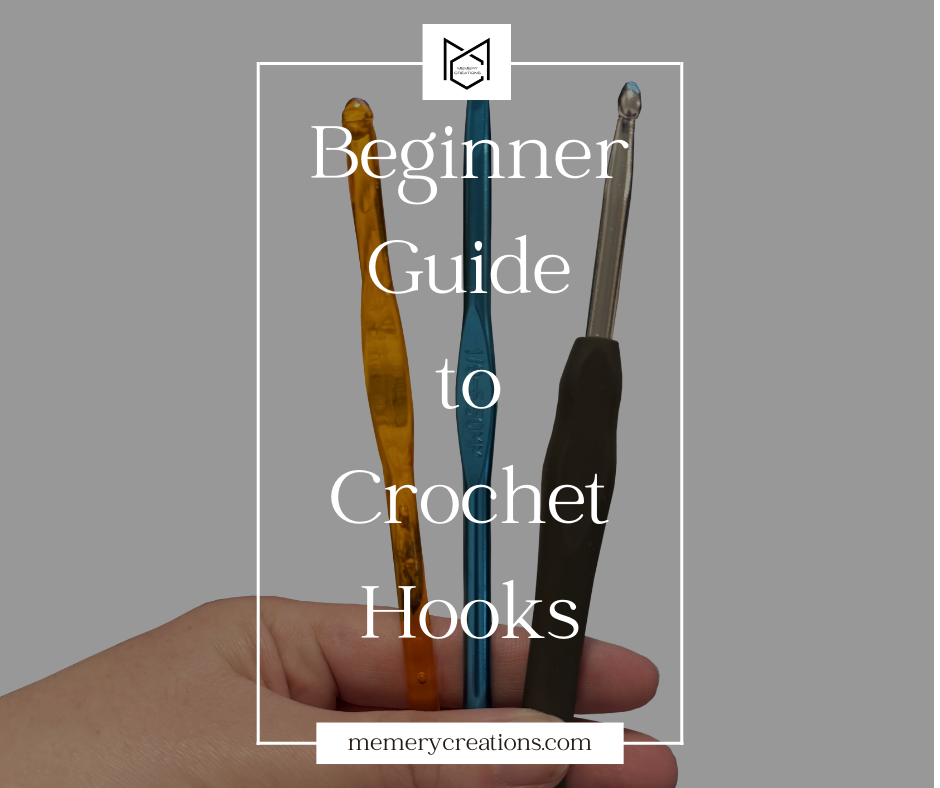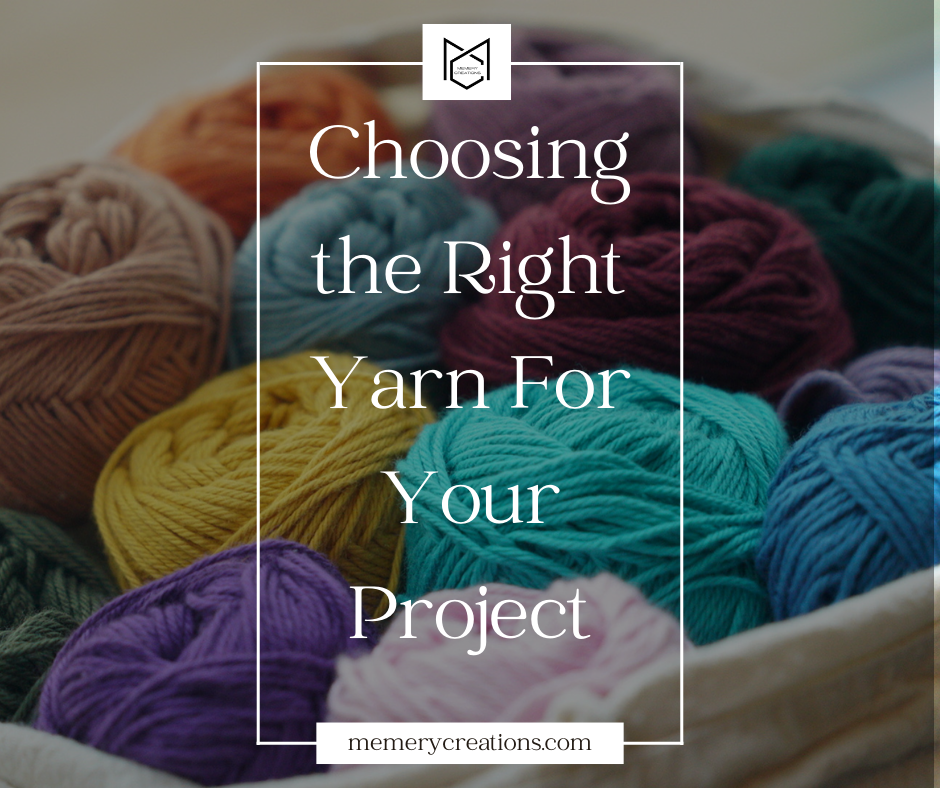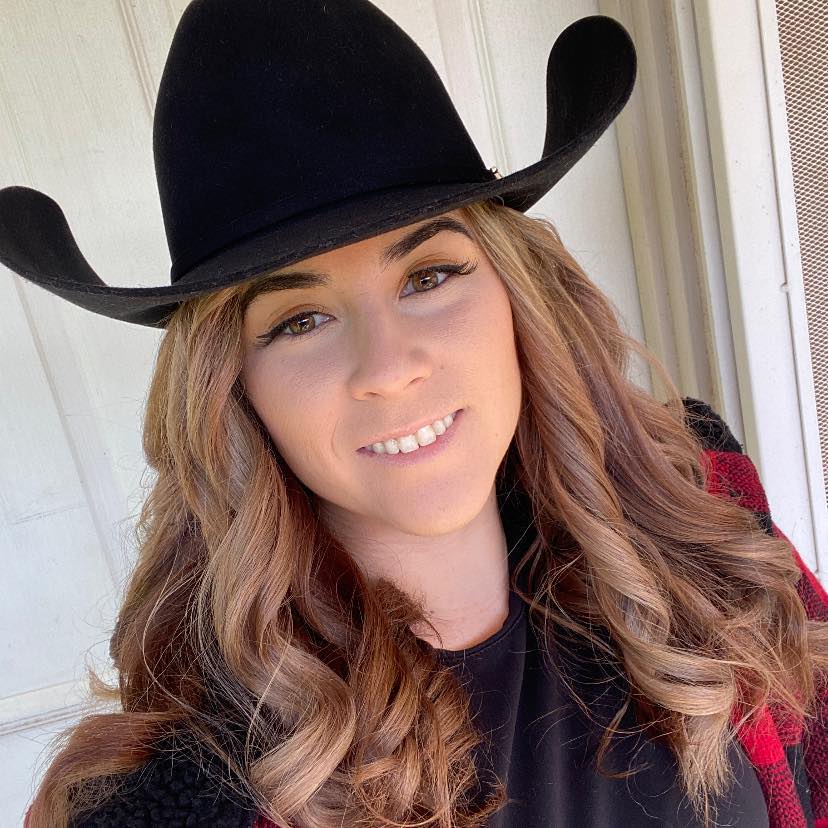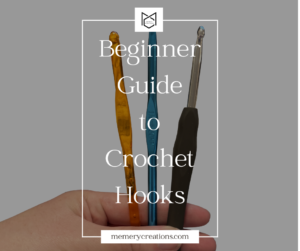This post contains affiliate links from Amazon. If you make a purchase through these links, I may earn a commission at no additional cost to you. Thank you for supporting my blog! #ad
Whether you’ve been crocheting for a week or you’ve been crocheting for years, you need to know the type of yarn that’s going to be right for your crochet project. There are different yarn types that are out on the market, and those types of yarn may even vary slightly between two different brands. Depending on whether you are crocheting a sweater suitable for winter, or a spring cardigan, you need to know which yarn type will be best for your crochet project. Today we will dive into different yarn weights and materials as well as some insight on choosing the right colors, determining your desired look, and last but certainly not least, we’ll talk about washing instructions for different yarn types.
Yarn Weights
You will most likely see different numbers on the label of the yarn when you’re purchasing it. This can vary from a 0 up to 7, and all of these will determine how thin or bulky this yarn is going to be. Contrary to the term, the physical weight of the yarn has nothing to do with its associated “weight” on the label. Furthermore, Some brands may have two of the same number, but the yarn itself may be ever so slightly different from each other.
This is why it is important to make sure that when you’re determining the right yarn type for your project that you select a brand that will have all of the colors and materials and yarn types that you need, so that you don’t accidentally end up with a lopsided project because you have two different yarn weights, even if they say they’re the same on the label. Most patterns will tell you what yarn weight to use for your project; however, it is ultimately up to you to decide what is going to be the best suited yarn weight for you.
For instance, a comfy winter beanie may suggest a 5 or 6 weight yarn, but you can still use a 4 weight yarn. You would just have to be sure that you gauge your project correctly so that it ends up being the size that you need. Let’s go into more details about the different yarn weights.
0 Weight – Lace
Starting with 0 Weight yarn, you may hear this referred to as “lace” or “fingering” yarn. It is best suited for doilies and thin shawls. You may also see it referred to as crochet thread. Much smaller crochet hooks are typically used for 0 weight yarn, such as this 10 piece crochet hook set meant specifically for this very small weight yarn.
1 Weight – Super Fine
A 1 weight yarn can be referred to as “super fine,” “baby,” “sock,” and “fingering.” These are typically meant for super fine needlework, such as socks, doilies, and shawls. You could even combine several skeins together to create your own custom, thicker weight yarn for your project. Similar to 0 weight yarn, 1 weight typically requires much smaller crochet hooks in order to work comfortably with this yarn.
Two Weight – Fine
2 weight yarn is called “fine” but may also be called “baby” or “sport.” This yarn is used for larger lace projects, super lightweight garments and baby items. It will typically have a great drape (how easy the stitches move past each other) because of its lightweight properties. A slightly larger hook can be used for this yarn, starting around 3.5mm.
Learn More About Different Crochet Hooks Here
Three Weight – Light
3 weight yarn is referred to as “light” but may also be called “DK,” or “Light Worsted.” A lot of people use this yarn for it’s incredible drape effect. I’ve seen this yarn weight used for light spring type of projects such as light sweaters or even some light beanies or I have personally made a dog sweater and a baby lovey and a baby blanket from three weight yarn. It is a popular weight to use for light garments because it’s not so thick that it makes the project bulky, but its still thick enough for a nice, opaque design.
A lot of crocheters like to use this weight yarn because most beginner crochet hook sets like this one from Amazon (the same set I purchased!) include the recommended crochet hook sizes for 3 weight, and it allows people to use a slightly thinner yarn and still achieve a nice project without having to purchase dedicated hooks.
Four Weight – Medium
4 weight yarn is one of the most common yarn types that you’ll see in yarn stores. It’s called “medium” but can also be called “worsted,” or “aran.” Most of the big name brands that you see in craft stores will have this type of yarn and it’s most commonly used by beginners because it’s the perfect middle ground of yarn. It’s not too thick and it’s not too thin. Many beginner crochet patterns call for a 4 weight yarn, and it’s extremely versatile. You can create blankets, hats, scarves, amigurumi and so much more.
Five Weight – Bulky
5 weight yarn is “bulky” and also called “chucnky,” “craft,” or “rug.” Bulky weight yarn is ever so slightly thicker than a four weight yarn but still manageable enough to create some really cool projects. The most common projects created with this yarn weight include blankets, hats, scarves, and rugs. It will typically have less drape than a 4 weight yarn, but not be too bulky that it makes a huge project (unless of course that’s what you want!) A wide variety of crochet hooks can be used with a bulky yarn, from a 6.5mm up to a 9mm hook (of course you can use bigger or smaller hooks if you want).
Six Weight – Super Bulky
6 weight yarn is called “super bulky” but you also may hear it referred to as “super chunky” or “roving” yarn. This is what is going to be used for thicker projects needing a little bit more body such heavy blankets, baskets, scarves, and rugs. This is a popular weight yarn to use in the colder months, and a larger crochet hook is required in order to get a good drape for your project.
Seven Weight – Jumbo
7 weight yarn is called “jumbo” but can also be called “ultra” and “roving” yarn. This is a popular yarn weight to use for heavy (HEAVY!) blankets and finger crochet. With how large the yarn is, the skeins can look quite deceiving at the store. Be sure to check how many yards or grams your project is calling for, because 3 skeins of 7 weight yarn will not have as much yardage as a 4 or 5 weight yarn.
Materials
Now that you’ve decided which weight yarn you want to go with, you’re going to need to determine what’s going to be the best material for your project. The most common yarn material that you’ll see in craft stores is going to be acrylic. Just like it sounds, this is a plastic yarn that may be irritating to some people with sensitive skin. Because it is plastic, it is typically not very heat tolerant so that is something to keep in mind when determining the yarn type for your project.
There are many other types of yarn materials such as cotton, wool, alpaca, bamboo, polyester, nylon, etc. Different materials are going to be best suited for different projects, and if you’re following a pattern they will typically tell you what type of yarn material to use for your project.
For instance, if you are crocheting a dishcloth or a potholder, you’re going to want to go with a natural fiber such as cotton instead of a man-made fiber such as acrylic. If you want a blanket, you’ll most likely go with an acrylic or polyester yarn because it will have a better drape and softer feel than a cotton yarn, which would not be best for a blanket only because it’s typically going to be a more sturdy yarn. Ultimately, you get to decide which material you want to use for your project.
Keep in mind that if you’re crocheting something for somebody else to gift or sell, make sure they don’t have any allergies. There are some people that are allergic to certain materials such as wool or alpaca, so make sure that you either disclose what the type of yarn is or you have the person tell you what yarn type material that they want for their project.
Colors
Colors and color theory are a completely different ballpark but I’ll touch on a little bit here in this blog. For beginner crocheters, you are not really going to want to work with darker yarns. The reason for this is that they can be a lot more difficult to see the stitches as your crocheting, so darker yarn colors such as brown, dark gray, navy, or black will be fine to use once you’re a little bit more familiar and comfortable with the basic crochet stitches.
Another thing to keep in mind is what your project is going to be used for. If it’s something that is going to be for a specific occasion or holiday or season, you’re going to want to choose colors that will complement such event. For example, a dark navy sweater may not be the most appropriate color for spring, and a baby pink blanket may not be the best choice for a boy’s baby shower (unless of course momma wants one!).
At the end of the day, you get to decide what colors you want to use for your project. There are many websites available that will help you choose complementary colors based on the overall look that you are trying to achieve. If you have a light brown yarn that you want to find complementary colors with, you can use basic color theory to determine which colors will best complement that yarn.
Desired Look
Desired look is a completely subjective topic when it comes to determining which yarn type to use for your project. It all comes down to practicality as well as aesthetics. As mentioned earlier, you’re going to want to find the right yarn weight, yarn color, and yarn type which will all come together to give you the desired look that you are looking for.
Some yarn may have different textures as well as thickness so first understanding what look you are trying to achieve will help you determine which yarn type will be best for your project.I have crocheted many blankets during my crochet career, all varying in weight from a 3 weight up to a 7 weight. I determined which yarn type to use based on how I wanted the overall blanket to look. Some blankets are best suited for colder weather, while other blankets are best suited for spring weather or just having a nice aesthetic looking cover on the back of a couch or a chair.
You also want to consider the drape of the yarn. Thinner weight yarn usually has a better drape than a thicker yarn, unless you make extremely loose stitches. The desired look will ultimately boil down to not only the type of yarn you use, knowing which hook size to use for your project, which stitch you are using, and how tight or loose you want your stitches to be.

Washing Instructions
Washing your yarn is a very important process of determining which yarn type to use for your project. Washing yarn incorrectly can not only damage your project but it can also deteriorate the quality of the yarn quicker. Below are a few key washing icons and their meanings so you can help identify how to wash your yarn.
Most if not all yarns will have the washing instructions on the label itself. Sometimes they’ll be written out so that it’s plain as day how you need to wash it, and sometimes they just provide the icons so you have to know what those icons mean in order to properly wash your project.
When in doubt, I typically wash my own projects on a delicate cycle with cold warm water and I will lay flat to dry. Some yarns can be thrown in the washer and the dryer, some yarns are only meant for hand washing, and some yarns can have heat applied to them. Make sure that if you are gifting your project to somebody or selling it, you include the washing instructions to the recipient so their gift will last them for a long time to come.
Most crocheters will wash their project as soon as its complete, especially if they are going to sell it to someone else. The reason for this is that is helps release the tightness in the stitches and allows the project to drape better, it also allows the crochet artist to block the project to get the desired look, and it also helps remove any skin oils, pet hair, or lingering odors. As someone who is allergic to cigarette for example, I wouldn’t like to receive a project that smells like smoke. 🙂
Conclusion
Determining the right type of yarn to use for your project will ultimately come down to your own preference. By understanding what your project is, how you want your project to look, and the overall general idea of the project will help you determine which yarn type will be best suited for your project. Most patterns will tell you which yarn to use and most of the times it will tell you either a specific brand or at the very least tell you which weight yarn to go with. Of course, these are all just suggestions and you’re free to pick whichever yarn type will work for you.
I’m working on a project right now that is calling for a 5 weight yarn, but I couldn’t find a suitable yarn color that I wanted that was the same yarn weight that the pattern called for. So I ended up going with a 4 weight yarn and I just adjusted my gauge to keep the desired effect that I would have gotten had I used a 5 weight yarn. It doesn’t diminish the quality or the overall look of the project, it’s just a very minor tweak in order to get the desired look.
If you have any other questions about determining what type of yarn is best for your project there are so many resources available that will help you along your crochet journey. At the end of the day, you should experiment with different yarn types to find what your favorite yarn types are, including both your favorite yarn weight and favorite brand to work with.





